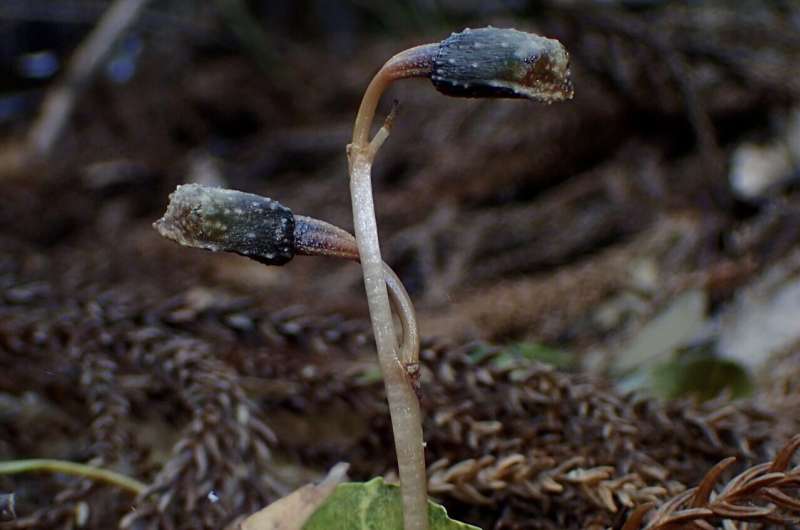Plants that reproduce exclusively by self-pollination arise from populations with extremely low diversity to begin with. Kobe University research not only adds a facet to possible evolutionary strategies, but also lends weight to Darwin’s suspicion that this strategy might be a path to extinction.
Charles Darwin once remarked, “It is hardly an exaggeration to say that nature tells us, in the most emphatic manner, that she abhors perpetual self-fertilization.” And yet, Kobe University botanist Suetsugu Kenji knows of a few islands in Japan where orchids reproduce without ever opening their flowers.
He says, “I’ve long been captivated by Darwin’s skepticism about plants that rely entirely on self-pollination. When I found those non-blooming orchids, I felt this was a perfect chance to directly revisit this issue. The apparent defiance of evolutionary common sense made me wonder what precise conditions—both environmental and genetic—would allow a purely self-pollinating lifestyle to emerge, let alone persist.”
On the Northern Ryukyu Islands of Kuroshima, Takeshima and Yakushima exist the only wild populations of plants known to reproduce solely by self-pollination.
“Our group spent over ten years working with local plant enthusiasts, monitoring more than a hundred individual plants across several islands, so we can say with certainty that these orchids never open their flowers in their natural habitats,” explains Suetsugu.
He and his team decided to subject these populations to genetic analysis that can detect minute differences even between closely related individuals, which allowed them to track gene flow and relatedness.
In the journal Proceedings of the Royal Society B, the Kobe University-led team now reports that the extreme genetic uniformity between the plants in each species proves that they are truly purely self-pollinating.
In addition, they also found that the two species each arose from insect-pollinated species that already have a very low degree of genetic variation in this geographic region. The variation is so low, in fact, that even though pollen might get transported from one plant to the next, it’s nearly identical to self-pollination.

This is only made worse by another observation Suetsugu made: the cross-pollinating relatives on these islands rely on fruit flies with limited flight ability. The animals thus only pollinate, if they pollinate the plants at all, flowers of the same plant or of those that live very close by, even further reducing the benefit of insect pollination.
Suetsugu explains, “Darwin’s statement was motivated by the idea that a purely self-pollinating lineage would accumulate harmful mutations and eventually face an evolutionary dead end. Yet our findings show that for the relative species with open flowers, the real genetic payoff for outcrossing might be marginal, giving the self-pollinating orchids, which are more successful at producing fruit, an evolutionary edge.”
As it turns out, Darwin’s skepticism might not have been unfounded. Another result of the Kobe University study is that even with conservative estimates, these self-pollinating species are at most 2,000 years old. Given that there are no other known examples of purely self-pollinating plants in the wild, such species might be ephemeral.
“The fact that these orchids truly never outcross raises intriguing questions about their long-term viability, especially under pressures like habitat fragmentation and climate change,” says Suetsugu.
He nevertheless is proud of his team’s findings, saying, “Each new data point, each newly described species, brings me closer to grasping the full spectrum of evolutionary possibilities.”
More information:
Genomic signature and evolutionary history of completely cleistogamous lineages in the non-photosynthetic orchid Gastrodia, Proceedings of the Royal Society B: Biological Sciences (2025). DOI: 10.1098/rspb.2025.0574. royalsocietypublishing.org/doi … .1098/rspb.2025.0574
Provided by
Kobe University
Citation:
On the origin (and fate) of plants that never bloom (2025, May 20)
retrieved 21 May 2025
from https://phys.org/news/2025-05-fate-bloom.html
This document is subject to copyright. Apart from any fair dealing for the purpose of private study or research, no
part may be reproduced without the written permission. The content is provided for information purposes only.

